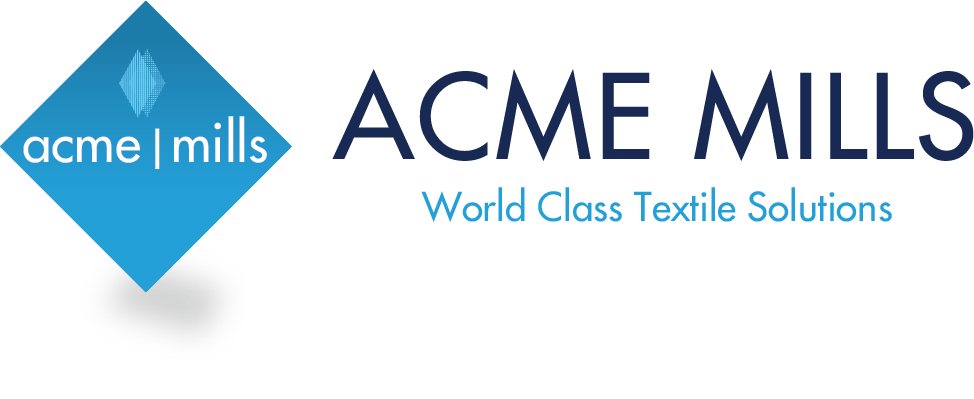Filtration is a mechanical or physical operation which is used for separation of solids from fluid (liquid/gas) by interposing a filtering media through which any fluid can pass.
The above fig. Shows the simplest arrangement of filtering operation where a filtering media over which material to be filtered is fed by separation. During this process, feed material may be solid, liquid or even gaseous state. After filtration the solid, liquid or gaseous content passing through filtering media is called as filtrate and impurities collected on the surface of filter media is called as cake.

Principle Involved In filtration Operation:-
- Principle of Interception.
- The principle of the internal disposition.
- The principle of random diffusion.
- The principle of electrostatic disposition.
- The principle of gravitational force.
The above fig. Shows the simplest arrangements of various principles involved during filtration which is mentioned above.
Principle of Interception:-
When a particle tries to pass through the fibre surface from distance smaller than the radius of the particle, it may collide the fibre and may be stopped or arrested on one side of filtering media.
E.g. filtration of tea powder with the help of fabric from boiled tea. In which fabric acts as a filtering media.
Principle of Internal Disposition:-
When a heavy particle is carried in the flow of air they may be thrown out from the string line flow due to inertia, this may cause the particle to be trapped in the fibre.
E.g. Sudden change of ducking path at the corner a fabric bag is kept which arrest the impurities. This system is used in modern blow room line.
Principle of Random Diffusion:-
Due to random diffusion and zigzag movement of a particle and in the flow due to which particle may not flow in zigzag route and thus it gets trapped.
E.g. Metal particles get trapped in blow room line with the help of magnets at turning curvature of ducts.
Principle of Electrostatic Disposition:-
Micro particles are very difficult to capture with mechanical method, so strong electrostatic charge is developed on fibre surface which helps to improve cleaning efficiency.
E.g. A fibre developed specially for microfiltration is of this type which is developed by Dupont.
Principle of Gravitational Disposition:-
Under the influence of gravity, a particle which is dropping may collide with fibre and gets caught or separated from the main stream.
E.g. Greed bars are provided at the base of blow room machines were heavy seeds/coats, leaf particles, hull, husk and micro dust drops at the base of the machine due to gravity.
Classification Of Filtration
Filtration can be classified as follows:-
- Particle filtration.
- Micro filtration.
- Ultra filtration.
- Nano filtration.
- Reverse Osmosis.
Particle Filtration
It is a separation of particle having a size above 1 micron. This can be filtered out easily without the use of the micro porous membrane.
E.g. separation of tea powder from boiled tea.
Micro Filtration
It is a process which removes contamination from fluid (liquid/gaseous) by passage through a micro porous membrane. The typical micro filter membrane pore size ranges from 0.1-10 microns.
E.g. vacuum cleaner bags used in commercial and domestic purpose.
Ultra Filtration
In ultra filtration hydrostatic pressure forces, the fluid against semi permeable membrane which suspends the solid particles are retained while the particles smaller than that passes through the pore size is below 0.1 microns.
E.g. this separation process is used in industry and laboratory for purifying and concentrating the micro molecules.
Nano Filtration
It is relatively recent filtration process used mostly to separate dissolved solids into liquid.
E.g. Fresh water or ground water filtration. Removals of impurities present in blood are separated by dialysis process. Also used in filters of a cigar.
Reverse Osmosis
It is similar to membrane filtration, but the difference between Ro And filtration is that here in Ro system the liquid is pressurized through the membrane retaining the unwanted particles on one side and allowing the pure liquid to pass over the another side.
E.g. Ro+Uv filters used for the domestic purpose and also used water purification plant used for industrial purpose.
Methods Of Filtration
There are many methods of filtration. The separation is achieved by some form of the interrelation between the substance to be removed and filtrate. As we all know there are three states of matter solid, liquid, and gaseous. When these three matters combine with each other they have to be separated using a proper filtering media. Their combination is as follows:-
Solid = Solid-solid, Solid-liquid, Solid-Gas.
Liquid = Liquid-liquid, Liquid-Gas.
Gaseous = Gas-Gas.
The different methods can be explained as follows:-
- Solid-Solid Filtration:-
When two different types of solids are mixed together, one solid is to be separated by interposing a filtering media. This method is called as solid-solid filtration.
E.g. separation of wheat flour and its husk. Also for separation of cement particles from big granules in the cement factory.
- Solid-liquid Filtration:-
When solid to liquid filtration is carried out the solid particles may be dissolved or in form of suspension, this solid particles are to be separated this is done by interposing a filtering media between them.
E.g. Separation of tea powder from boiled tea.
- Solid-Gas Filtration:-
In this method, solid particles are separated from the gas by interposing a filtering media between them.
E.g. air conditioners filters, air filters used in vehicles, vacuum cleaners etc.
- Liquid-liquid Filtration:-
In this type of filtration, two different types of fluids are separated with the help of their molecular weight. To achieve this filtration a filtering media is manufactured through which a liquid is passed and separation of two different liquid is achieved.
E.g. Application of hollow polyester fibers is used in an artificial kidney. Also used in fuel filters which separate diesel and water.
- Liquid-Gas Separation:-
In this type of filtration method highly dense nylon fabric is used because nylon is available with high tenacity and it is stable to many chemicals. In this method gas saturated with liquid is passed through a filtering media, the filtering media arrest the liquid molecules and allow only gas to move forward. Thus the separation of liquid and gas takes place.
E.g. central modification plant used in textile industry were dry air is sucked from the atmosphere with the help of fans then it is saturated with water and finally passed through a dense nylon fabric. The nylon fabric arrests the water molecules and saturated air reaches the department. In this big water molecules are sprayed which may adversely affect the physical condition of a machine.
Selection Of Fibres For Filtration
Fibres selected for filtration should be capable of withstanding harsh environmental conditions such as temperature, abrasion, and chemical stability. Generally, synthetic fibres are used for this purpose and they are preferred because of following reasons.
- Fibres selected should have high strength.
- It should be easily handed able so that fibres should be flexible in nature.
- Easy separation of filtration cake should take place.
- They should have low density so that fabric weight is reduced.
- The fibre selected should have rote resistance property. The fibre selected should have good dimensional stability.
- If requires high-temperature resistance.
- If requires high abrasion resistance.
- If requires high chemical resistance.
Depending upon the end use the fibres can be selected from the following chart:-
| Fibres | Temperature |
| Acrylic | 130 c |
| Polyester | 150 c |
| PPS | 190 c |
| Aramide | 200 c |
| PTEE/Teflon | 260 c |
| Glass Fibre | 250 c |
| Ceramic | 1000-1200 c |
Factors to be considered while designing a filter fabric:-
- Open vessel/closed vessel.
- Particle size.
- Chemical stability.
- Flow rate.
- Temperature.
While designing the filter fabric above mentioned points has to be considered.
- Open vessel/closed vessel:-
If the filter fabric exposed to atmospheric pressure it will be stable, but as soon as it is used in a pressurized vessel the fabric should be dimensionally stable air flow or fluid.
E.g. Filter fabric used for separation of tea particles from boiled tea is different than filter fabric used in cement filtration.
- Particle size:-
Depending upon what to fibre the filtration spectrum decides the core size that has to be maintained in filter fabric.
E.g. In house hold purpose different types of filter media are used by house wife to separate adulteration from food grains and flour.
- Temperature:-
Proper selection of fibres is necessary for the general house to hold purpose. Regular fibres like cotton, polyester etc are suitable but, when the filter fabric is exposed to high-temperature special fibres like polypropylene, glass fibre, ceramic fibres has to be selected depending upon end use.
- Chemical stability:-
For chemical filtration fibres selected are glass, ceramic fibres, and polyolefin fibres the all mentioned above fibres have good resistance to the chemical.
- Flow rate:-
The fabric to be designed has to be exposed for dry filtration or wet filtration. Depending upon the type of vessel it may be closed vessel or open vessel. So the stability of filter fabric is directly proportional to flow rate of a fluid.
Test to be performed for filtration fabric:-
- Air permeability.
- Filter efficiency.
- Bursting Strength.
- Tensile strength.
- Chemical stability.
Air permeability:-
The amount of air transferred from one side of the filter fabric to another side through a known area in given time is called as air permeability. Depending upon the end use the air permeability varies.
Filter Efficiency:-
In this test granules of metal of known size are kept on one surface for duration of 10 min and oscillating motion is given to holder after 10 min the weight of granules collected at lower container is noted and filtration efficiency is calculated using following formula
Filtering Eff = Initial Weight – Final Weight X 100 / Initial Weight
Bursting Strength:-
It is applied to filter fabric, because in closed vessel containing the fabric is exposed to flow of fluids. The air pressure required to burst is noted in this test.
Tensile Strength:-
It is general test applied to the textile material. In this method, a strip of fabric is clamped between two fixed jaws which are loaded at a constant rate. The upper jaw is fixed and lower jaw is movable. The force required to break this fabric in Gm/pound is noted which is called as tensile strength.
Chemical Stability:-
It is tested if filter fabric is used for chemical filtration depending upon the use a specific test has to be applied.










